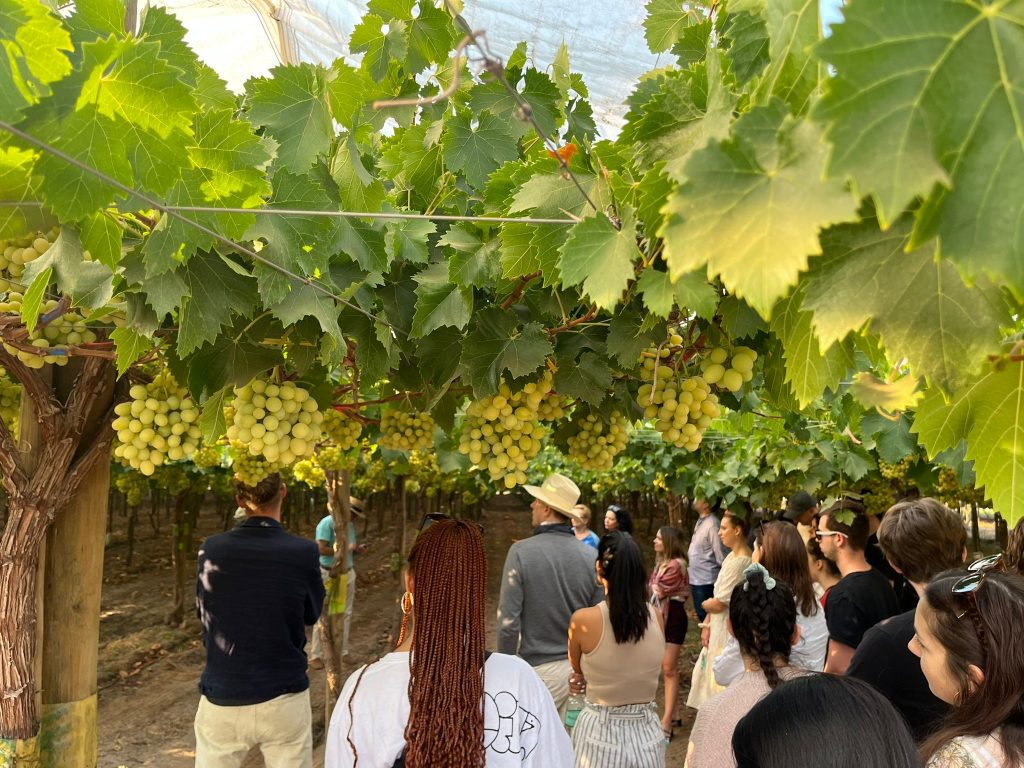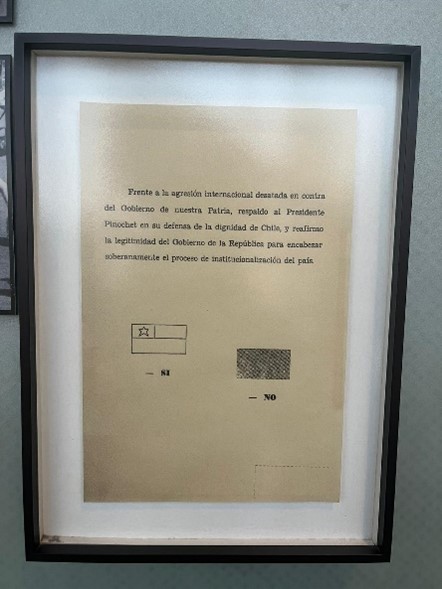Friday arrived, the last day of our study trip in Chile. On the program was another insight into the Chilean fruit industry and a more culturally impacted afternoon.
First thing in the morning, our car drove us to Summit Fruits. They specialize in the export of fine, organic, ready-to-eat table grapes.
We got a tour through the whole farm, seeing endless fruit plants (one plant survives around 20 years!), and, of course, were able to taste some of the grapes directly from the plant. Growing different variations, they also grow Thompson seedless grapes. These are the first seedless grapes, exclusively grown in Chile and Greece, and most important for the production of raisins.
The fruits are washed and packaged from the harvesting process (by hand) and finally stored between 0 and -1 degrees. From there, they get to supermarkets within 40-60 days. Not only to domestic supermarkets but worldwide. Around 50% of the production is sold to the North (Canada & USA). After this interesting visit, we went to the beautiful Barrio Italia, where we got some free time to explore the neighbourhood and eat lunch.


In the afternoon, we visited Pereira Palace which is a cultural and artistic centre. As part of the visit, we had a guide who explained the history of the palace and its significance to Santiago. It was named after Luis Pereira, a very influential politician who decided to build this palace. It served as a venue for many significant meetings and a hub of social activity. Moreover, Pereira’s Palace served many different functions over the years, among them serving as a high school. The palace was restored several times due to some unfortunate earthquake episodes over the years.


Afterwards we headed to the Museum of Memory and Human Rights. Located in the west side of Santiago, constructed in 2010, the museum spills light over the dark happenings and human rights violations by the forcefully rising Chilean government during the period of 1973-1990.
Although nine-eleven is globally known for the NY terrorist attack, it dates back also to 9.11.1973, when coup d’état began, prompting a fascist government.
Photos and newsprint presented in the museum reveal the scale of the mass flea (approx. 300,000 people) from the country. Many behalf the left wing party sought asylum, often in Nordic countries. As of then and until this day, large Chilean communities can be found abroad. Those who weren’t fortunate enough, and had lost their lives in demonstrations or due to the depressive violence from the state’s behalf, may now be found on a gigantic wall in the museum showcasing their portraits.
Through a monitor on the 2nd floor, each of the casuals can be selected and more information about his/her life can be obtained.
In 1980, a referendum took place to approve the new constitution. The purpose was mainly that the country, ruled by a military dictatorship lead by Pinochet, holds its power. The absence of democracy was evident through the form of which this referendum was constructed, as can be seen in the figures below:


If one would vote in favor of the new constitution, it would mean the selection of the star – symbolizing unity, patriotism and loyalty. Otherwise, objectors would select the black forms/flags, suggesting they are traitors of the state.
In the evening the Swiss Global Entreprise, who organised this trip for us, invited us for a tasty farewell Dinner at the Restaurant Liguria. Hereby we would like to thank them again for making this trip unforgettable. With great food and conversations we ended this amazing trip.